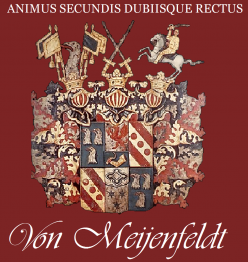Oskar Sjöström, doctorand, förskare “Varför krig?”, Historiska Institutionen, Stockholms Universitet, oskar.sjostrom@historia.su.se
CH-719
Bilthoven, 10 oktober 2020
Hi Hugo,
Interesting research!
Actually, the article is published in both Swedish and English as a chapter in the book Armémuseum – om krig och människor / Army museum – on war and people (2009). However, it is not an entire article just a single page containing some new information about the cannons that were taken in Posen 1703. Previously, it was thought that the cannons were taken as trophies in the battle of Posen 9th August 1704. This was an educated guess since one figure was missing in the inscription that were given the cannons when they were shipped back to Sweden as trophies (in translation the inscription reads: “1699 by King Charles XII given to Polish Emissary Galetsky but by the help of God retaken at Posen 170[last figure missing]”).
What I found was a note in colonel Gabriel Lillihööks diary from when Posen was captured 7th September (Swedish calendar) 1703 which in translation reads: “The 9th […] an inventory was made of all the captured pieces [cannons] and ammunition in the city, that were 27, among which 10 Royal Swedish regimental guns that had been given by His Royal Majesty to Galetsky [Franciszek Zygmunt Galecki] when he was emissary to Sweden, 4 of metal [bronze] and 6 of iron all with his Royal Majesty’s name and weapon.”
From this its quite clear that the canons were not taken in the battle a year later.
I hope this information is helpful to you.
Best regards,
Oskar
Bilthoven, 12 oktober 2020
Dear Oskar,
Thank you very much for taking the time to explain the precize circumstances. In rough lines I understood your correction already from the explenatory note in the Army Museum. Although real facts are not so important these days anymore, for me they are.
Best regards,
Hugo
